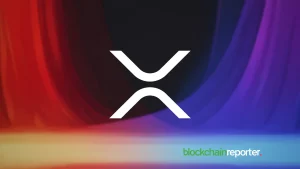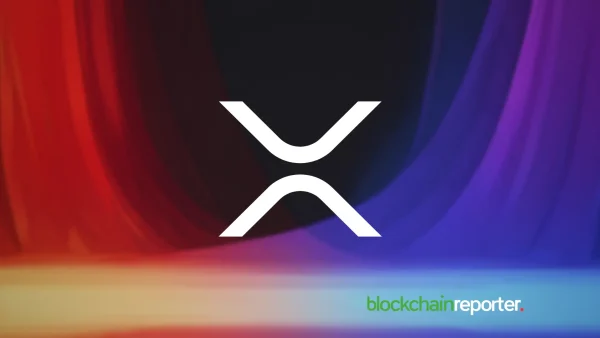
- New Brunswick: A Quick Introduction
- New Brunswick: Economy
- New Brunswick’s Mysterious Gasoline Charge
- Industry Consultation On Formula
- No Way To Repay Customers
- Current N.B. Gas Prices
- N.B. Gas Price Prediction By BlockchainReporter
- NB Gas Price Prediction 2023
- NB Gas Price Prediction 2024
- NB Gas Price Prediction 2025
- NB Gas Price Prediction 2026
- NB Gas Price Prediction 2027
- NB Gas Price Prediction 2028
- NB Gas Price Prediction 2029
- NB Gas Price Prediction 2030
- Conclusion
New Brunswick has really become a special spot in Canada known for its pretty nature, friendly folks, and yummy seafood. But there’s something else that catches the attention of anyone living or visiting here: the gas prices, which seem to always be on the move. For many people in New Brunswick, gas prices are a big deal and a common topic of chat. They often find themselves asking, “Why did the gas price jump today?” or “Will it cost less next week?” Gas prices don’t just change without reason. There are lots of things that can make them go up or down. Some of these reasons might be linked to things happening in countries far away. Others might be due to decisions made right here in New Brunswick. Even the sea, the condition of the roads, and the weather can have a say. In this article, we’ll talk about changing gas prices in a simple and easy way. We’ll discuss all the things that can make gas prices change, how these changes can affect people living in New Brunswick, and we’ll also make some guesses about N.B. gas price prediction.
New Brunswick: A Quick Introduction
New Brunswick, or “Nouveau-Brunswick” in French, is one of Canada’s thirteen provinces and territories. It’s part of both the Maritime provinces and the Atlantic provinces groups. It’s special because it’s the only province that officially speaks both English and French.
This province has Quebec to its north, Nova Scotia to its east, and the U.S. state of Maine to its west. It’s also near the Gulf of Saint Lawrence and the Bay of Fundy. A big part of New Brunswick, about 83%, is covered in forests, and the northern part has the Appalachian Mountains. The weather here has snowy winters and mild summers.
New Brunswick is 72,908 square kilometers in size and has 775,610 people living there according to the 2021 census. Unlike other places in Canada, only about half of the people live in cities. The biggest cities are Moncton and Saint John, while Fredericton is the capital city.
In 1969, the province made both English and French its official languages through the Official Languages Act. This means people in New Brunswick can choose to use either language when they use government services. Most people, around two-thirds, speak English, while one-third speak French. The province is important to the cultural region of Acadia and is home to many Acadians. The type of French spoken here is called Acadian French, and you can hear 7 different regional accents.
New Brunswick has a rich history that began with First Nations like the Mi’kmaq and Maliseet and was later shaped by European colonization. The region, originally part of the colony of Acadia, switched between French and British control multiple times before firmly becoming British territory after conflicts and mass deportations of Acadians in the mid-18th century. Established as its own colony in 1784 after an influx of loyalists from the American Revolution, New Brunswick joined Canada in 1867.
Despite periods of prosperity, particularly in shipbuilding and lumbering, the province faced economic challenges and became one of Canada’s poorer regions by the mid-1900s. Today, with a GDP significantly contributed by services, manufacturing, and notable companies like the Irving Group, New Brunswick navigates through economic and demographic shifts, while also being a hub for tourists attracted to its natural wonders and parks.
New Brunswick: Economy
In 2017, New Brunswick’s employment was divided between the goods-producing sector (73,400 jobs) and the services-producing sector (280,900 jobs), with people working in various industries like manufacturing, construction, social assistance, trades, and health care. The Irving Group of Companies, owned by the Irving family, has a significant influence on the province’s economy, controlling numerous businesses across different sectors like agriculture, forestry, transport, and media.
The U.S. is the province’s main export market, with refined petroleum and seafood products being major exports. In 2015, non-resident tourism brought in $441 million, contributing $87 million in tax revenue. The Irving family, through its vast business network, has been described as having a form of economic feudalism over New Brunswick, with its businesses benefiting from tax exemptions and subsidies.
The family has also had notable influence in the media sector and political sphere, with every premier since the 1970s having their support, and the current premier, Blaine Higgs, being a former executive of the group. The Irving Group’s influence has sometimes been questioned and criticized, especially regarding its impact on public sector forestry assets and environmental management.
New Brunswick’s Mysterious Gasoline Charge
The New Brunswick government is in the dark about the final destination of an additional six-to-seven-cent charge per liter of gasoline. Recent discussions at the legislature’s public accounts committee revealed the inability to track the revenue from the “carbon cost adjustor,” introduced to gas prices in July.
Tom McFarlane, Deputy Minister of Natural Resources and Energy Development, expressed his lack of insight into whether the charge benefits retailers, wholesalers, or refineries, stating, “I don’t know.” His responses to questions from MLA Andrea Anderson-Mason, who questioned the government’s assurance that the extra charge would assist small gas stations, highlighted a tangible skepticism and uncertainty about where the additional funds ultimately land.
Anderson-Mason intensely questioned McFarlane following his admission of uncertainty about the recipient of the additional gasoline charge. “Shouldn’t we have knowledge about its destination?” she probed. “Where have the seven cents, paid by consumers over this period, gone? Who is benefiting from it? It’s landing in someone’s pocket, but whose?” In the previous fall, the Higgs government enacted legislation allowing the Energy and Utilities Board to incorporate the adjustor into its weekly maximum gasoline price-setting formula. This move was a reaction to new federal clean fuel regulations, aiming to reduce Canada’s greenhouse gas emissions by rewarding oil refineries that minimize their carbon intensity during production.
Companies with refineries, such as Irving Oil, have the option to adopt various emission-reducing strategies that earn them credits, which can be traded in a specialized market. Conversely, companies that do not reduce emissions face penalties and are compelled to purchase credits in the market. However, Irving, which exports the majority of its product to the United States, qualifies for fewer credits.
McFarlane informed the committee that New Brunswick’s regulation of the final gasoline price to consumers means retailers might feel the pinch from the new rules. He expressed, “If we don’t have a mechanism to display that price somewhere in the formula, it’ll ultimately be the retailer who gets squeezed in the end.” The refinery could transfer its increased costs to wholesalers, who might then relay them to retail gas stations. However, these stations would be unable to pass them onto customers due to the maximum-price legislation.
Industry Consultation On Formula
The Energy and Utilities Board (EUB) engaged accounting firm Grant Thornton to formulate a proposed model for the adjustor, consulting various industry stakeholders, including Irving Oil, a significant gasoline supplier in the region, to devise a formula. Since its implementation on July 1, the adjuster has varied around six to seven cents per regular unleaded liter of gas.
Green Leader David Coon articulated that the adjustor was crafted to neutralize the financial impact of federal regulations on Irving, thereby alleviating the company’s need to curtail its emissions. Federal Environment Minister Steven Guilbeault, in June, anticipated the initial cost impact of the regulations to be “very small, incremental,” suggesting that Irving might be preparing for a “worst-case scenario” that may not materialize as the new credit market stabilizes. “There’s no regulatory reason why the price of gasoline should increase this July,” he stated.
During the committee session on September 8, MLAs learned that contracts between the Irving refinery, wholesalers, and retailers are confidential “commercial arrangements,” with some being long-term and others short-term.
No Way To Repay Customers
Heather Quinn, the director of the energy division of the Department of Natural Resources and Energy Development, emphasized, “It’s not something we can track. It’s private information, it’s private companies, so it’s not publicly available.”
Anderson-Mason highlighted that Nova Scotia’s regulator engaged two consultants: one proposed an adjuster resulting in a surcharge akin to New Brunswick’s, while the other found no price impact at all. Consequently, the Nova Scotia regulator opted for a middle ground, establishing an adjuster charge around 3.5 cents — half of New Brunswick’s.
McFarlane noted that the EUB intends to review the adjustor formula after six months. However, if it emerges that the New Brunswick adjuster was excessive or unnecessary, McFarlane acknowledged there is no mechanism for customers, who have been paying it, to retrieve their money. “There’s not a mechanism to recoup it that I know of,” he stated.
Current N.B. Gas Prices
New Brunswick residents are struggling with a stark reality that has become all too familiar globally – soaring petroleum prices. The recent data reveals a steep climb in the prices of various types of motor and heating fuels, reflecting a tense energy market and posing significant challenges to both consumers and businesses alike.
The maximum total prices, inclusive of Harmonized Sales Tax (HST), for various fuels in New Brunswick are as follows:
- Regular Gasoline:
- Self-serve: 176.1 cents per liter
- Full-serve: 179.5 cents per liter
- Mid-grade Gasoline:
- Self-serve: 179.5 cents per liter
- Full-serve: 183.0 cents per liter
- Premium Gasoline:
- Self-serve: 183.0 cents per liter
- Full-serve: 186.4 cents per liter
- Ultra-low Sulphur Diesel:
- Self-serve: 212.5 cents per liter
- Full-serve: 215.9 cents per liter
- Heating Fuel:
- Furnace Oil: 198.2 cents per liter
- Propane: 115.8 cents per liter
For the everyday commuter and transportation businesses, the spike in gasoline and petroleum prices is particularly biting. The elevated prices at the pump translate to higher costs for travel, goods delivery, and services, which can subsequently inflate the prices of goods and services across the board. Moreover, the surge in furnace oil and propane prices poses a significant burden, especially as the colder months loom. Households and businesses that rely on these fuels for heating are likely to experience a notable uptick in their heating expenses, potentially straining budgets and impacting the overall cost of living and operating.
From an inflationary perspective, the elevated fuel prices can exert upward pressure on the overall price level across various sectors, from groceries to manufactured goods, given the integral role of transportation in supply chains.
Moreover, businesses, particularly those in the transportation, manufacturing, and agricultural sectors, may face squeezed profit margins due to the elevated operational costs, which could potentially lead to layoffs or reduced hours for workers.
Fixing the problems caused by the high gas prices needs lots of different solutions. We need to do a few things at the same time. First, we need quick solutions, like giving money to help the people and businesses that are hurt the most by these high prices. This can be in the form of subsidies or other financial help.
Also, this situation shows us that it’s really important to move faster towards using energy sources that are better for the environment and won’t run out.
Putting money into and encouraging the use of different kinds of energy, making public transport better, and making sure all areas use energy in a smart way can be key plans to help avoid problems from gas prices going up in the future.
N.B. Gas Price Prediction By BlockchainReporter
NB Gas Price Prediction 2023
In 2023, the average gas price in New Brunswick is projected to stabilize around 180 cents per liter. Prices could potentially fall to a minimum of 168 cents or rise to a maximum of 212 cents. Various factors, including global market, regional demand, and governmental regulations, contribute to this forecast. Efforts by the province to diversify its energy sources and the global shift towards sustainable alternatives also play a role in defining these figures.
NB Gas Price Prediction 2024
Moving into 2024, the gas prices in New Brunswick are expected to witness an upward trajectory. The average price might settle around 200 cents, with a possible low of 185 cents and a high soaring up to 235 cents. This anticipated rise is based on factors such as increasing global demand, potential geopolitical influences, and regional infrastructure developments.
NB Gas Price Prediction 2025
In 2025, New Brunswick’s gas prices are forecasted to continue their upward trend, with an average price potentially reaching 220 cents. The minimum price might hover around 202 cents, while the maximum could hit 250 cents. Global and local shifts towards alternative energy sources will also impact these numbers.
NB Gas Price Prediction 2026
By 2026, the average gas price in New Brunswick could escalate to around 240 cents per liter, with prices fluctuating between a minimum of 225 cents and a maximum of 265 cents. The continuous evolution of geopolitical influences, market demand and advancements in regional infrastructure are anticipated to shape this projection.
NB Gas Price Prediction 2027
Entering 2027, the gas prices in New Brunswick might see an average of 260 cents, with a potential dip to 242 cents and a peak reaching up to 280 cents.
NB Gas Price Prediction 2028
In 2028, the average gas price in New Brunswick is projected to be around 280 cents, with a minimum of 263 cents and a maximum of 300 cents. The continuous demand of gas and the advent of several energy sources might contribute to this forecast.
NB Gas Price Prediction 2029
For 2029, it is anticipated that the average gas price in New Brunswick might hover around 300 cents, with a possible low of 285 cents and a high of 320 cents.
NB Gas Price Prediction 2030
Concluding the forecast, in 2030, New Brunswick might witness an average gas price of 320 cents, with a potential minimum of 305 cents and a maximum peaking at 340 cents.
Conclusion
The fluctuating gas prices in New Brunswick have become a pivotal point of discussion and concern among residents, policymakers, and businesses alike. The implications of these price variations are far-reaching, impacting the economic stability, consumer behavior, and overall financial health of the province. While some individuals may experience a direct hit due to escalated commuting costs, businesses, particularly those reliant on transportation, struggle with increased operational expenses.
Furthermore, the effects permeate through various sectors, influencing pricing strategies and potentially escalating the cost of goods and services across the board. It is imperative for stakeholders to collaboratively explore and implement strategic measures aimed at mitigating the impact of these fluctuations. This may encompass exploring alternative energy sources, enhancing public transportation systems, and implementing policies that safeguard the interests of the most vulnerable populations.
READ MORE:
Kibho Coin Price Prediction: Will Kibho Coin Decline Following Legitimacy Rumors?
Xxc Renegade 1000 Xxc Price Prediction: Will This ATV Gain Popularity In 2023?
Kibho Cryptocurrency: A Fine Choice for Huge Crypto Returns
Reliance Power Share Price Future Prediction 2025: Will RPOWER Stock Reach ₹100 In 2023?









